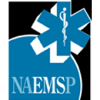This article originally appeared in the Article Bites blog of the National Association of EMS Physicians and is reprinted here with permission.
By Adrien Quant LP, Hashim Q. Zaidi MD
Editing by EMS MEd Editor James Li, MD (@JamesLi_17)
As discussed in “Should waveform capnography be in the EMT scope of practice?,” under the National EMS Scope of Practice Model (2019), EMTs are expected to initiate several critical airway and breathing interventions for a variety of medical and traumatic conditions. However, in order to evaluate ventilation and perfusion, EMTs must currently rely on lung auscultation and pulse oximetry – both of which have critical limitations [2]. The limitations of lung auscultation and pulse oximetry can be addressed by the introduction of waveform capnography to the EMT scope of practice (Brandt 2010). Here, the benefits of waveform capnography to EMTs and their patients will be discussed.
Benefits of waveform capnography
Waveform capnography is a non-invasive tool that provides a quantitative measure of expired CO2 throughout the respiratory cycle. A small end tidal carbon dioxide (ETCO2) sensor is placed at the patient’s nose or mouth. During inhalation, the ETCO2 sensor reads a baseline CO2 partial pressure. During initial exhalation, the CO2 partial pressure rises sharply as CO2 rich gas arises from the alveoli. As exhalation continues, the CO2 partial pressure plateaus, and then returns to baseline upon inhalation. In a healthy patient, this physiological process produces the usual “table-shaped” waveform with plateau readings of 35-45 mmHg. Lower respiratory system and V/Q abnormalities cause deviations from the expected “table shape” that are easily recognizable and clinically useful.
Once trained in capnometry interpretation, EMTs would gain valuable information that other vital signs cannot quickly provide. Here are three quick scenarios demonstrating the potential benefits of waveform capnography during common EMT-level interventions.
- Monitoring respirations. An unresponsive patient has been loaded onto the ambulance by EMTs. Prior to leaving the scene, normal pulse rate and adequate respiration rate and depth are confirmed. Pulse oximetry reads 92%, so the EMT manually opens the airway and places the patient on supplemental oxygen via nasal cannula. On route to the hospital, the EMT notices that the patient’s SpO2 is slowly dropping. The EMT switches to a non-rebreather with an airway adjunct, and increases the amount of oxygen, but the SpO2 continues to drop. The EMT begins to count respirations, and finds the chest rise and fall very shallow. Upon auscultation, they are not sure if they can actually hear any lung sounds over the driving noise. The patient’s heart rate begins to drop, and the EMT promptly begins positive pressure ventilations. If the EMT had access to end-tidal capnography, they would have noted the patient’s drop in respiratory rate and depth almost immediately, minutes before the delayed notification from the pulse oximeter and falling heart rate.
- Monitoring positive pressure ventilation. A patient is unresponsive due to heat stroke. Respirations are inadequate, so one EMT begins positive pressure ventilations while the other cools the patient. Although the EMT sees adequate chest rise and fall, the pulse oximeter reads “low.” Unsure if they are ventilating the patient adequately, the EMT begins squeezing the BVM more forcefully and ventilating the patient at a faster rate, inducing barotrauma and gastric inflation. If the EMT had access to end-tidal capnography, they would have known whether they were adequately ventilating the patient. Furthermore, they would have observed that ventilating the patient more forcefully was not improving alveolar gas exchange, reducing the likelihood of continued overventilation and patient injury.
- Monitoring CPAP therapy. An elderly patient is experiencing difficulty breathing. Due to the patient’s medical history, physical presentation, and vital signs, the EMT concludes the patient is experiencing a COPD exacerbation. The EMT administers an albuterol treatment and places the patient on CPAP. Throughout transport, the patient continues to experience respiratory distress, and their SpO2 slightly increases from baseline. If the EMT had access to end-tidal capnography, it may provide clues for the etiology of the patient’s respiratory distress. Capnography could also reveal impending complications such as cardiovascular collapse or pneumothorax. It can help monitor patient response to bronchodilator and non-invasive positive pressure ventilation treatment.
In these scenarios, lung auscultation and pulse oximetry provided the EMTs with insufficient ventilatory information, leading to patient deterioration. However, proper utilization of waveform capnography would have provided the EMTs with the critical information needed to better monitor their patients. Waveform capnography provides a non-invasive, accurate assessment of a patient’s ventilatory status. While the technology is already extensively utilized by ALS prehospital providers, in many rural parts of the United States, an EMT may be the highest level of prehospital care that a patient receives. Why should waveform capnography be limited to ALS providers? Considering its numerous benefits, should we include waveform capnography in the EMT scope of practice?
Learn more
- Should Waveform Capnography Be In The EMT Scope Of Practice? The Limitations of Lung Auscultation and Pulse Oximetry
- Should Waveform Capnography Be In The EMT Scope Of Practice? What’s the Big Picture?
References
- Brandt P. (2010). Current Capnography Field Uses, JEMS. https://www.jems.com/patient-care/current-capnography-field-uses-sup/
- Brown LH, Gough JE, Bryan-Berg DM, Hunt RC. (1997). Assessment of Breath Sounds During Ambulance Transport. Annals of Emergency Medicine, 29(2), 228–231. https://doi.org/10.1016/S0196-0644(97)70273-7
- Chan E, Chan M, Chan M. (2013). Pulse oximetry: Understanding its Basic Principles Facilitates Appreciation of its Limitations. Respiratory Medicine, 107(6), 789–799. https://doi.org/10.1016/j.rmed.2013.02.004
- DeMeulenaere S. (2007). Pulse Oximetry: Uses and Limitations. The Journal for Nurse Practitioners, 3(5), 312–317. https://doi.org/10.1016/j.nurpra.2007.02.021
- Meenahc, D. (2013). Why CO2 Monitoring in EMS is Expanding. https://www.boundtree.com/university/capnography/why-co2-monitoring-in-ems-is-expanding
- National Highway Traffic Safety Administration. (2019). National EMS Scope of Practice Model. https://www.ems.gov/pdf/National_EMS_Scope_of_Practice_Model_2019













